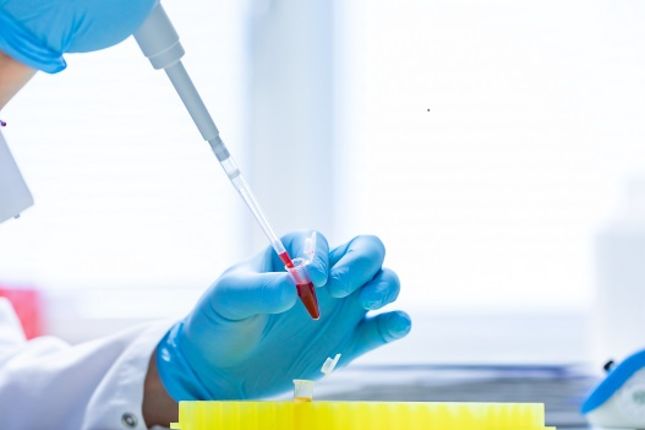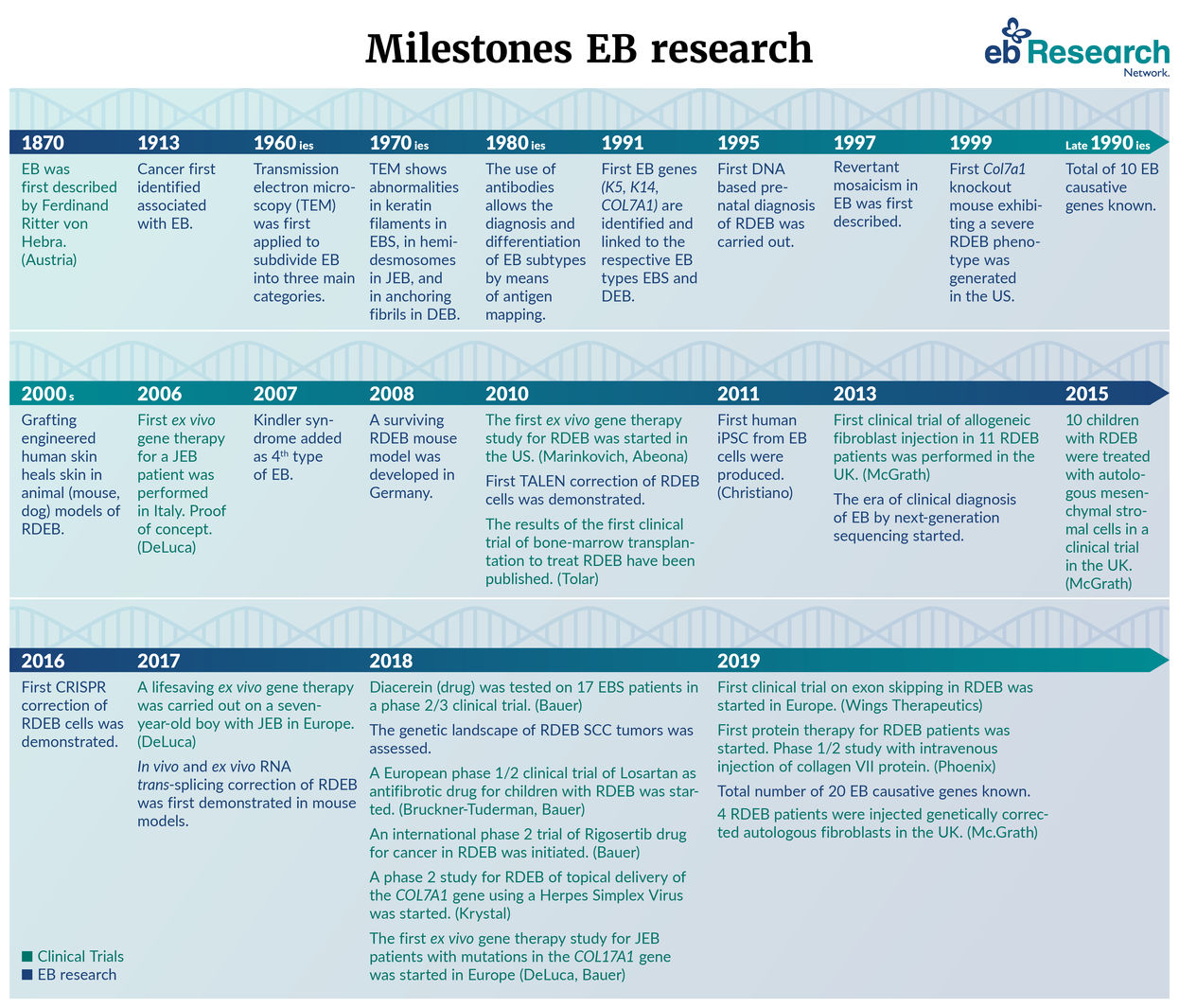Why is it so difficult to find a cure?
Challenges of EB research
EB is a group of conditions, and because the underlying genetic cause differs from one type of EB to another, with resulting differences in symptoms, severity and prognosis, a variety of treatment strategies are being developed.
EB, although thought of primarily as a skin-blistering disorder, is a systemic disease, with chronic inflammation and tissue malfunction throughout most organs, leading to failure to thrive and premature death. Ultimately, systemic therapies are required, though localised treatments to address non-healing wounds provide relief for patients living with EB now.
Unmet medical needs
There is currently no cure for any form of EB, and treatment still focuses largely on wound care by protective bandaging to reduce pain and further damage, and managing complications from the risks of infection, fibrosis and poor nutritional status.
However, over the past decade, there has been a rapid transition of therapeutic concepts to early-stage clinical trials. Chronic skin wounds and their complications are the most obvious feature of most EB types, and most therapeutic approaches attempt to repair skin to heal wounds and strengthen it against further damage.
Most of these approaches are tackeling one of the main unmet mdedical needs:
- Chronic inflammation and fibrosis
- Pain
- Itch
- Cutaneous squamous cell carcinoma (cSCC)
What therapeutic approaches are currently being pursued?
EB is a systemic disease, and for some severe subtypes systemic treatments or cures are essential to ensure survival and quality of life. Step-change improvements to tissue integrity for EB patients will be made by addressing the underlying defects in the structural proteins. To remedy these defects, diverse technologies currently being developed include topical and systemic treatments to provide a functional protein through correction of the primary genetic defect at the DNA or mRNA level, or by the direct provision of protein. Therapeutic strategies explored in clinical studies range from different types of stem cells either donor-derived, or patient-derived and gene-corrected, to corrected fibroblast or keratinocyte treatments, injected intradermally or engineered into skin grafts. Other approaches include the application of a healthy protein, gene or gene transcript, antisense oligonucleotides, and premature termination (PTC) readthrough drugs using various routes.
Symptom-relieving or disease-modifying therapies using small molecular drugs address secondary disease sequelae such as itch, pain, inflammation, fibrosis, or oncogenesis to improve quality of life in affected individuals.
Therapeutic approaches:
- Gene therapies and combined gene/cell therapies
- Cell- and extracellular vesicle-based therapies
- Wound dressings
- RNA-based therapies
- Protein therapies
- Drug therapies





